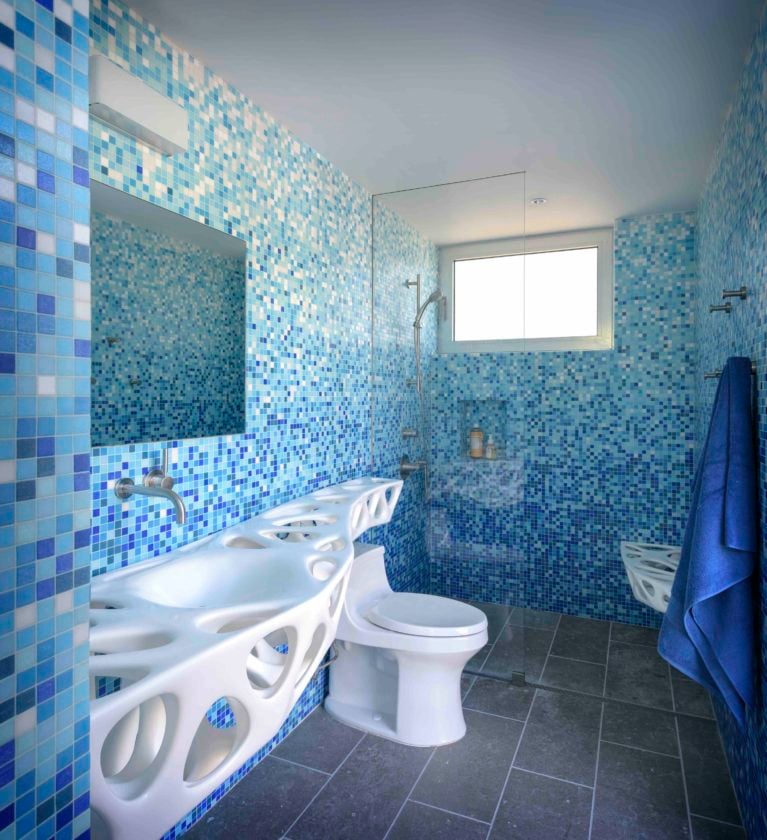
As an upscale remodel began on a California home in 2017, architect David Swaim reached out to Shapeways for help in 3D printing a customized bathroom vanity. Verner Architects is a smaller firm mainly focused on residential design. With a resourceful team of four working together in design, Swaim describes the firm as fairly young (founded in 2006), and agile. Direct access and good communication with Steve Verner, the leader of the firm, has allowed Swaim to take the lead on challenging projects like the large vanity, especially due to his knowledge of technology like CNC and 3D printing gained during formative years at California State PolyTechnic University (class of 2011).
“We do a lot of transitional projects in the city, bridging our more modern aesthetic together with either craftsmen or Victorian-style houses that are remodels,” said Swaim in a recent interview with Shapeways. “Our primary design aspect is high modern though.”
Verner Architects actually began the remodel by installing a standard vanity. On further discussion with the client though, he mentioned that because they were remodeling the bathroom for his kids, he wanted to strive for something more fun and unique. This led Swaim to consider a custom theme for the vanity, as well as seeking the proper materials for strength, durability, and longevity—with a product that could hold up to the rigors of energetic kids and moisture, meaning it had to be waterproof too. Inspired by coral structures, Swaim took the lead on this project and the design, which culminated in a completely customized piece.
Swaim has been a fan of the services we offer to a wide range of customers at Shapeways for years; however, most of the work he was familiar with previously revolved around smaller objects.
“I’ve been aware of Shapeways since architecture school,” said Swaim. “Once I graduated I worked at an architectural model shop where we would get little pieces of furniture that we could not build by hand printed and delivered to put in our models.”
This project marks the growing trend—not just for work by Verner Architects—but for many other designers and engineers to look toward 3D printing for larger-scale items. Due to the print-bed size of SLS technology that Shapeways offers, Swaim and his team were “pleasantly surprised” at how easy it was to assemble the six-foot-long vanity, fabricated with Strong White Plastic and then coated with polyurethane for waterproofing. Two test prints were performed in-house at Verner Architects, allowing the team to refine the design and structure the best way to connect the pieces.
In the architectural and construction fields (along with countless other industries), 3D printing still offers enormous benefits for users engaged in rapid prototyping. Designers are able to create extremely complex models, and make changes easily as they work with their clients; however, users today expect many of their 3D printed items to be not only functional, but high performing too, with Swaim’s 3D printed vanity demonstrating just how far the technology has progressed beyond the constrictions of rapid prototyping only.
Depending on the materials chosen, clients can focus on their need for strength, lighter weight, flexibility, transparency, or nearly any feature desired for 3D printing quality products. Explore the world of 3D printing services we offer at Shapeways. Without having to invest in 3D printing software, hardware, or materials on your own, you can benefit from our long-term experience and investment in proprietary, advanced technology.


